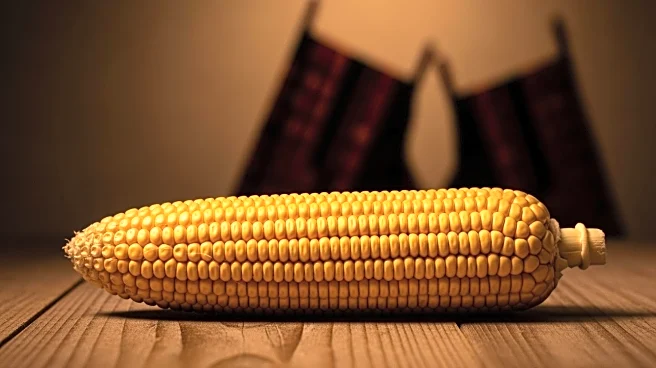What's Happening?
Iowa Agriculture Secretary Mike Naig has highlighted growing trade opportunities with India following a recent mission led by Governor Kim Reynolds. Iowa signed a partnership with Maharashtra, India's second most populous state, focusing on ethanol, soybean feed, and protein products. The agreement comes amid global trade tensions, including a 25% tariff imposed by the Trump administration on Indian goods due to India's Russian oil purchases. Despite these tensions, Naig remains optimistic about the potential for increased trade with India, particularly in renewable fuels and protein products.
Why It's Important?
The partnership with Maharashtra could significantly benefit Iowa's agricultural sector by opening new markets for ethanol and soybean feed. As India's middle class grows, demand for protein products is expected to rise, presenting opportunities for Iowa farmers. The agreement also reflects Iowa's strategic focus on renewable fuels, aligning with India's efforts to expand biofuel use. However, ongoing trade tensions between the U.S. and India could impact the partnership's success, highlighting the need for diplomatic efforts to resolve these issues.
What's Next?
Iowa plans to continue its global outreach with upcoming trade missions to Vietnam and Indonesia, aiming to expand markets for ethanol, soybeans, corn, and livestock products. The state will need to navigate international trade dynamics and potential tariffs to maximize the benefits of its partnership with Maharashtra. Continued dialogue with Indian officials and business leaders will be crucial to advancing trade discussions and overcoming geopolitical challenges.
Beyond the Headlines
The partnership with Maharashtra highlights the broader trend of U.S. states seeking direct trade agreements with foreign regions to bypass federal trade barriers. It underscores the importance of subnational diplomacy in fostering international trade relations. The agreement also raises questions about the role of renewable fuels in global trade and the potential for U.S. agricultural products to meet rising global protein demand.











